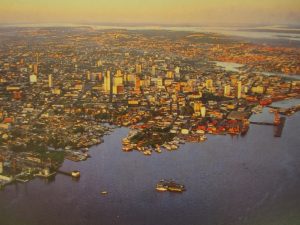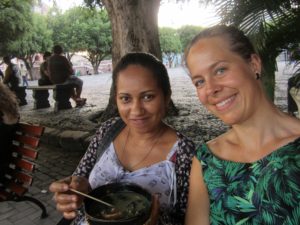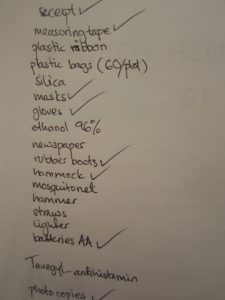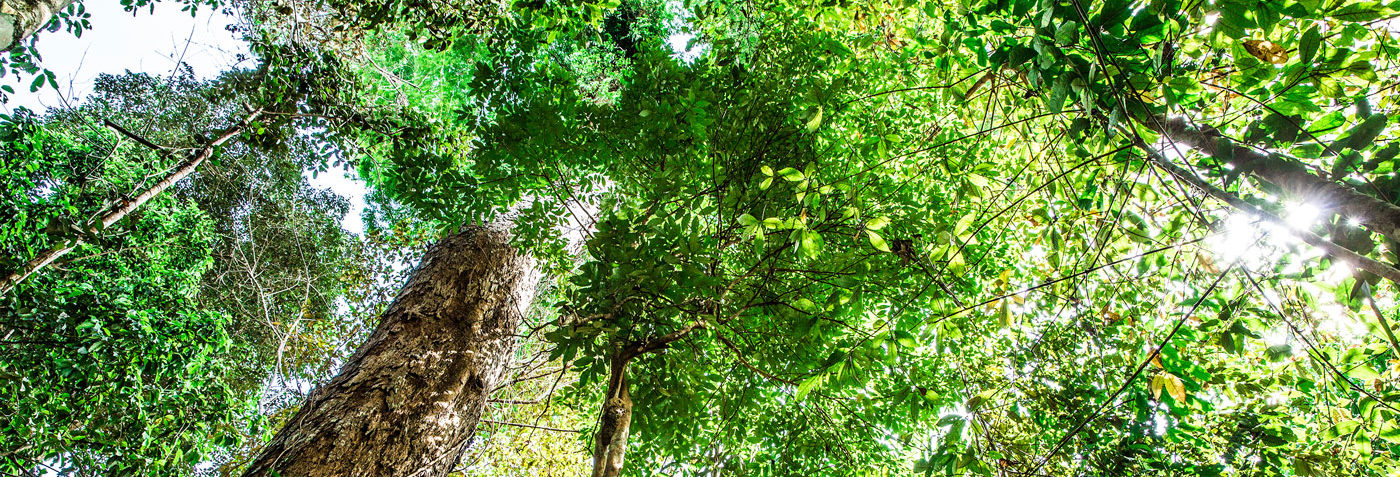
I arrived here on Monday 15 August together with Monica who I met in Brasilia, Brazil’s capital. From the airport in Manaus, we took a taxi to The National Institute for Amazonian Research, INPA, where we met my predecessor Rafael Leandro de Assis, a former PhD student of my supervisor Torbjørn Haugaasen and a dear friend. From INPA we went with Rafael to his home where Monica and I would stay during our time in Manaus. Coming back to Manaus, I felt like coming home and it was a wonderful feeling to wake up in the mornings to the sounds of cicadas, birds and sometimes monkeys.
Manaus is the capital of the state of Amazonas. During the rubber boom, Manaus was known as the Paris of the tropics. It was a rich city where Russian caviar and French champagne was flown in for the parties of the rubber barons. Back in the days, Manaus was the first city in Brazil to have electric light, in the streets ran French trams and outside the Opera house, the streets were covered with rubber to silence the noise of late coming charts which would otherwise have rumbled on the cobblestone streets. Still today, the centre of Manaus bares the mark of these days of greatness and boasts both impressive buildings and beautiful squares. Yet, one needs not wander far before the face of the city changes and one must take great care whilst roaming the city centre, as is also true for most other places of Amazonas’ beautiful and vibrant capital.

In the square of Amazonas Opera House you can try Tacacá, an Indian dish typical from the Brazilian Amazon made with tucupi (boiled manioc), tapioca starch, dried shrimps and jambu (hot and slightly anaesthetic paracress leaves).
The first three days of my stay in Manaus, I dedicated to the Federal Police and the registration of my visa. To get to the Federal Police I had to go into the city centre, change busses by the Military College and take buss 200 to somewhere far, far away. Fortunately, once I had figured out how to get on the busses (some you must enter from the front doors and exit at the back and others you must enter from the back and exit at the front, get this wrong and you are left behind), the person handling the payment would usually be kind enough to indicate where I should get off. From there began the process of filling in forms, printing forms, booking a meeting for the visa registration, paying fees and taking fingerprints. Although tedious, the process ran smoothly and by the end of Thursday 18 August, I had a slip of paper with which I will be able to pick up my registration by November, or as soon as I am back from the field.
At the same time, I was negotiating with Seu Alex, the parabotanist, for when he should come with me into the field while I also tried to coordinate our flights to Carauarí and the boat to go upriver with Joseph E. Hawes and João, alias JB. Communication in the Amazon is not easy but in the end, we managed. Monica and I fly out to Carauarí on Saturday 27 August to finalize the field preparations there. In Carauarí we will meet João and two other PhD students also working in the Juruá, Andressa Skabin and Carol. On September 20, Joseph and Seu Alex will join us. Joseph will stay three weeks until October 11 when he and Monica fly back to Manaus. Seu Alex will stay with me until November 1 to finalize the insitu tree species identifications.
With the visa registration and a rough fieldwork plan in place, I only need to get hold of the last few things on my packing list and we will be good to go!

